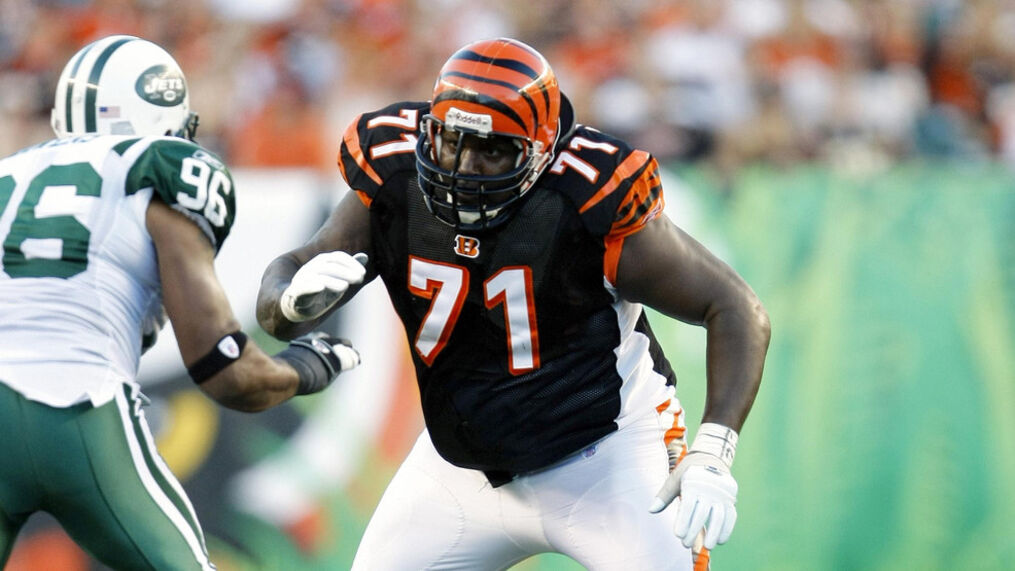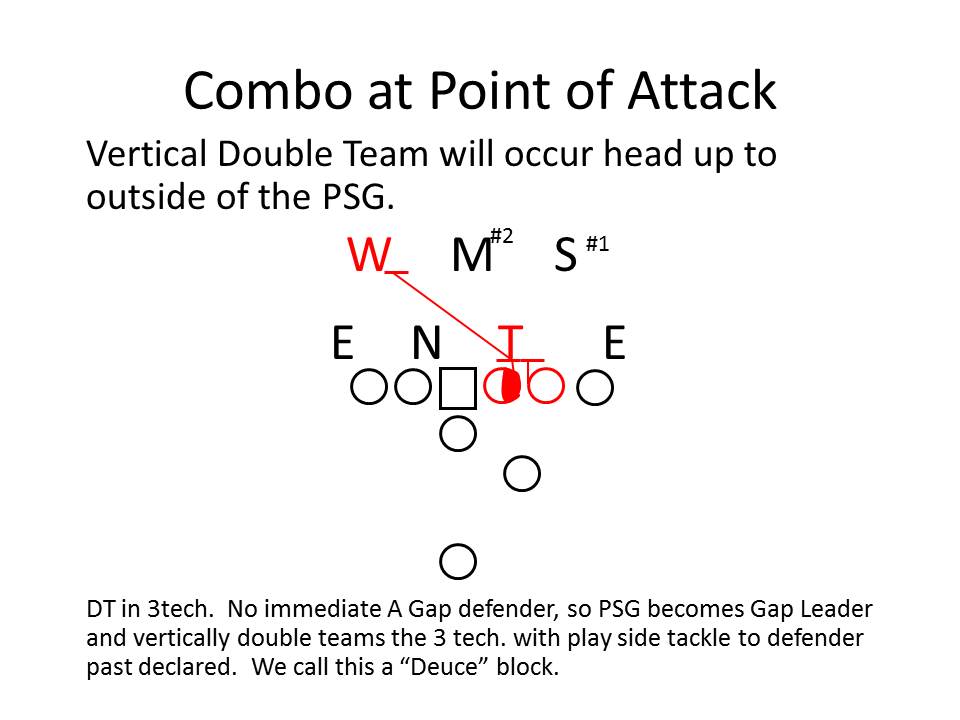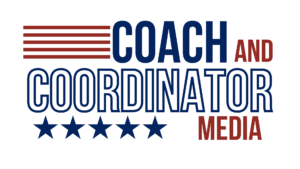
By Keith Grabowski
In our first two installments we talked about the offensive line and how different skills sets should be considered when choosing scheme to fit your personnel. The same approach holds true with offensive tackles.
Interior Linemen, Part 1 & Part 2
Match Personnel with Scheme
The primary difference between Offensive Tackles and Centers and Guards is the length and athleticism required of the OT position to block lighter, faster athletes. In looking at building an offensive line and placing available personnel, it’s valid to think strength and size inside and length and athleticism outside.
Of course, as we have pointed out, all of your athletes will not fit into a perfect profile. That’s where decision making on scheme and development comes into play.
While athletes will fit across a continuum of skills from big and strong to long and athletic, it’s easiest to look at the two extremes to begin to determine what schemes they best fit into.
As we pointed out before, stronger and bigger linemen are better suited for a “downhill run game” that relies on vertical displacement of defenders that “dent the defense.’ Schemes like inside zone and duo work best for these type of linemen.
The more athletic linemen, who may be undersized may be better in plays that focus on horizontal displacement like outside zone.
Clearly, it would be presumptive to assume that any single offense will have only one particular kind of linemen.
Utilizing different types of linemen together
Let’s look at a scenario where there are athletic interior linemen with stronger and bigger tackles. It may be advantageous to keep that bigger, longer player outside, but maybe he doesn’t have the feet to capture a reach block at a high rate.
In this scenario, having him to double team or down block becomes a more viable option. That’s where a decision to run pin and pull may be more advantageous. That can be coupled with a downhill run game that allows for double teams with the smaller, athletic interior lineman with the bigger tackle as the “drive man.”
An example of this would be utilizing a “power” scheme called to the 3 technique.
Against an over front, the guard is the post man. If he has no immediate threat in his inside gap, he is responsible for posting the down lineman to his outside gap. His objective is to get vertical displacement of the down lineman by driving him upfield at the point of attack.

The eyes of the post man are immediately to the backside linebacker so he knows exactly when he needs to come off. In taking his eyes in that direction he is able to block an inside A-gap threat

The offensive tackle in this example is the drive man. His objective is to drive the defender who is in his inside gap vertically with the post man. Eventually, he will take this block over on his own. The only time he will come off of the block is if the down lineman plays into the inside gap of the post man.
We want the drive man to be aggressive in his block and really have the mentality that he is getting into the defender and driving him downfield. He should take pride in being able to drive the defender in his gap off the ball. In his mind, the guard is setting him up and straightening the defender so that the drive man can aggressively finish the block and get the vertical displacement needed for a successful play.

In setting up assignments this way, the skill set of each lineman is maximized. The bigger, stronger OT is responsible for vertical displacement, and the smaller, athletic guard is using his quickness to set up the block while being responsible for level two where he is better matched physically.
This approach does take organization of your thought process in game planning and play calling. We will get into this aspect later in this series.
Finally, that less mobile tackle would cause some concern for pass protection. Looking at a scheme that helps him with a back or tight end either chipping or assisting would be useful.
Start with Stance
OT’s should have a high football IQ in order to read pressures and make adjustments. One thing that can help an OT in identification is playing from a two point stance. Bryant Offensive line coach Steve Ciocci coaches up the 2 point Stance in his free course. Here he explains why the two point stance can be effective in this video:
Place a premium on development
In the equation is certainly development. So while a body type may not fit a profile, as a coach you still have the ability to develop a skill set that is effective in your offense. The next sections cover development, of hands, feet, posture and hips.
Protecting the passer – develop the hands
Protecting the edges in pass protection is one of the tougher skills to develop. In addition to quickness and flexibility, timing and handwork become very important. The concept of independent hands has made its way into coaching at every level.
The Hands: Why independent hands?
- Helps prevent overcommitment (causing head to follow hands)
- Allows same power as 2 hands OL has ability to choose when to use
- Allows OL ability to use different punch techniques that bes attack pass rush move
- Helps OL keep hips square and play longer
Ohio University OL Coach Allen Rudolph explains In this video:
Posture
Like many offensive line coaches, Arthur Ray likes to train his linemen to punch and have proper posture with med balls. It’s a method that is effective training independent hands as well. He demonstrates a posture drill in this video:
Footwork: Pass Sets
Having different types of sets is very useful. Some match up to your schemes or even body types better. Loren Endsley does an outstanding job of breaking these down in his course “Fundamentals of Pass Protection.” Understanding what works best for your particular personnel is helpful. Endsley explains the different sets in this video:
Retired FBS OL Coach John Strollo still studies the game and develops new techniques. He notes,
In close quarters where momentum is limited, It’s harder to move “big guys”.
Long Arms and legs give you top speed and reach, but cost quickness (acceleration) and mechanical advantage. You can’t move as much weight. By bending your arms and legs you gain quickness and enjoy mechanical advantage, so that you can move more weight. We call this playing “condensed”.
This advantage comes at the cost of reach, so you must develop some specific skills, similar to boxing, to prevent a long armed defender from “locking you out”. You must always maintain firm contact with the ground. You can’t move yourself or your opponent if your feet are slipping.
Strollo explains this in detail in his course “Fundamentals of Acceleration in Football”
Drills for Game Day Application
Ciocci, shares an approach to development of offensive linemen and being sure that drills apply to what happens on game day. This approach is effective in developing all linemen, and he covers development of several skill in the run game. This video illustrates his drill philosophy:
Jim McNally is a master coach. He shares a technique that can be utilized to pull the tackle on the wide zone play if he has an attached TE next to him. The following video is form McNally’s course “Rules and Techniques for blocking inside-outside and wide zone”:
What this shows is that you can get creative with who down blocks and who pulls in your offense. In this scheme the remainder of the offensive line can still reach. An offensive tackle having trouble with a reach could still help you create the wide zone running lane in this manner. Again, it’s about matching skill sets to scheme.
Run Game Footwork
Brian Callahan, Offensive Line Coach at Minnesota teaches footwork by utilizing foot targets. This video from his course illustrates how they use cones to accomplish the work they need for their different types of blocks:
We’ve talked about hands and feet, but the coaching point probably verbalized the most on the field by an offensive line coach is “USE YOUR HIPS!” Former NFL OL Mike Pollak works with Cleveland Browns Assistant Offensive Line Coach Scott Peters to develop techniques and players from the youth level through the NFL (The Browns graded out as the #1 run and pass blocking team on PFF). A key component that they may have figured out better than anyone is getting players to effectively use their hips. In this video from their course “Force Deflection Base Blocks on the LOS” explains how they do it:
What’s it all supposed to look like? Brian Baldinger and Bob Wylie illustrate the coaching points in the “Offensive Line Seminar.” Wylie points out a key point about developing offensive linemen, using future Hall of Fame OT Joe Thomas. “The key is the production of the player. That’s what matters.” Watch the video:
Have a Starting Point – Sometimes that’s Ground Zero
If you are building your O-Line from scratch or coaching O-Line for the first time, St. Thomas University Offensive Line Coach Tony Neymeyier gives tremendous insight into the process. He has been the offensive line coach for the year one start-up of two different college football programs. He shares it all in this clinic “Building an Offensive Line from Scratch.”
In this video, he shares his background. His situation may resonate with you, and the ideas he shares may be very useful in determining the direction you need to develop your offensive line in 2021. Watch the video:
After identifying the different skill sets amongst your offensive linemen and placing them in positions, the schemes should follow. Personnel always needs to be the first determinant in what you will run. Scheme comes next.
The first three installments cover both the skill sets and the schemes that may fit. Remember, there’s the development component that will make a big difference over the course of the next year, but having a sound starting point that best matches your players will help them build confidence as they continue to learn and grow in other areas of offensive line play.
Up next: Tight Ends


